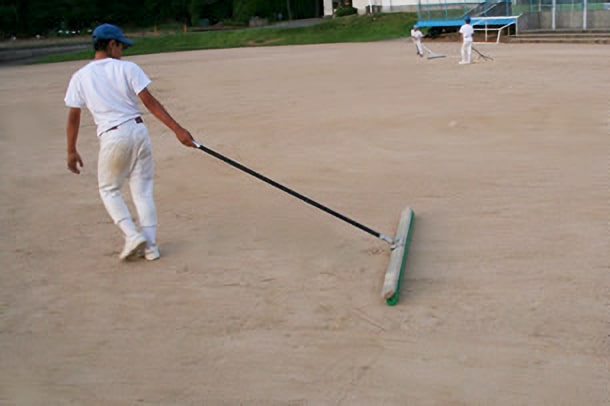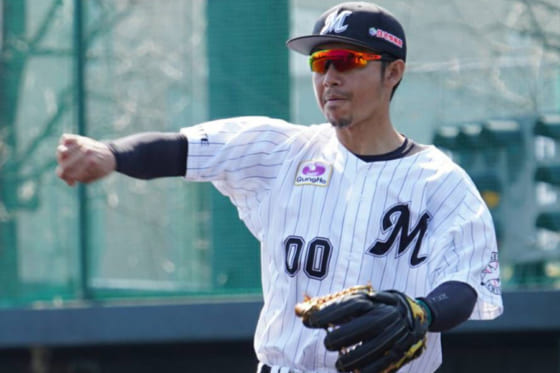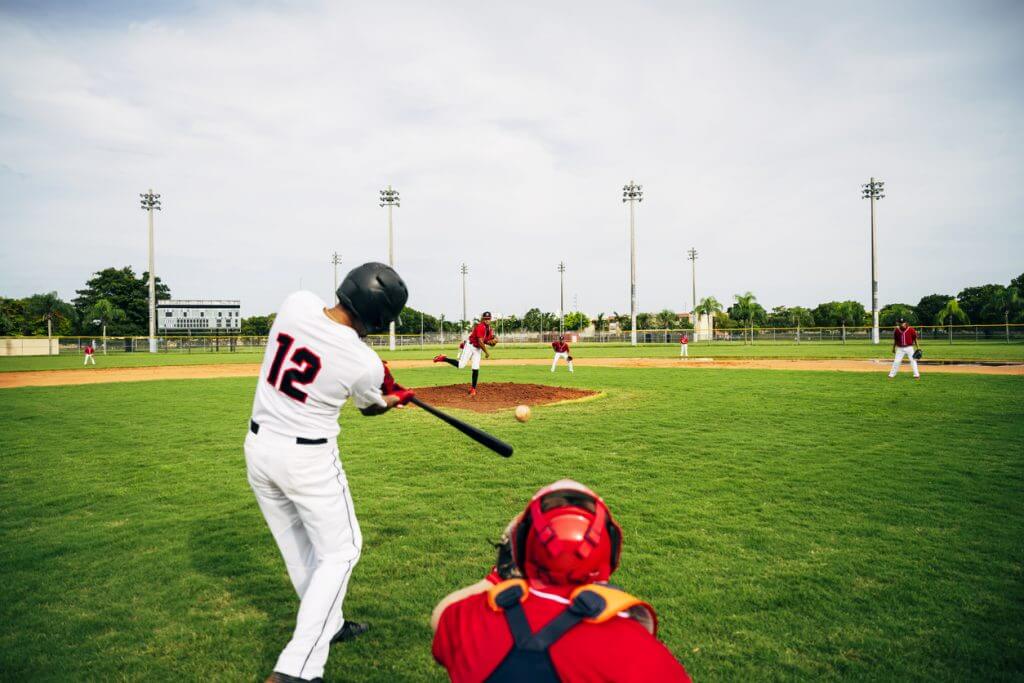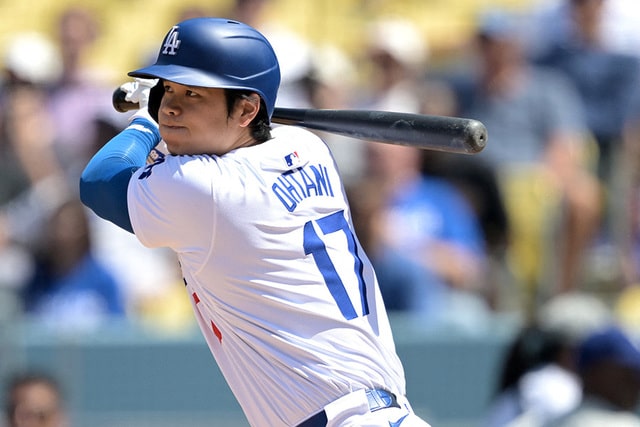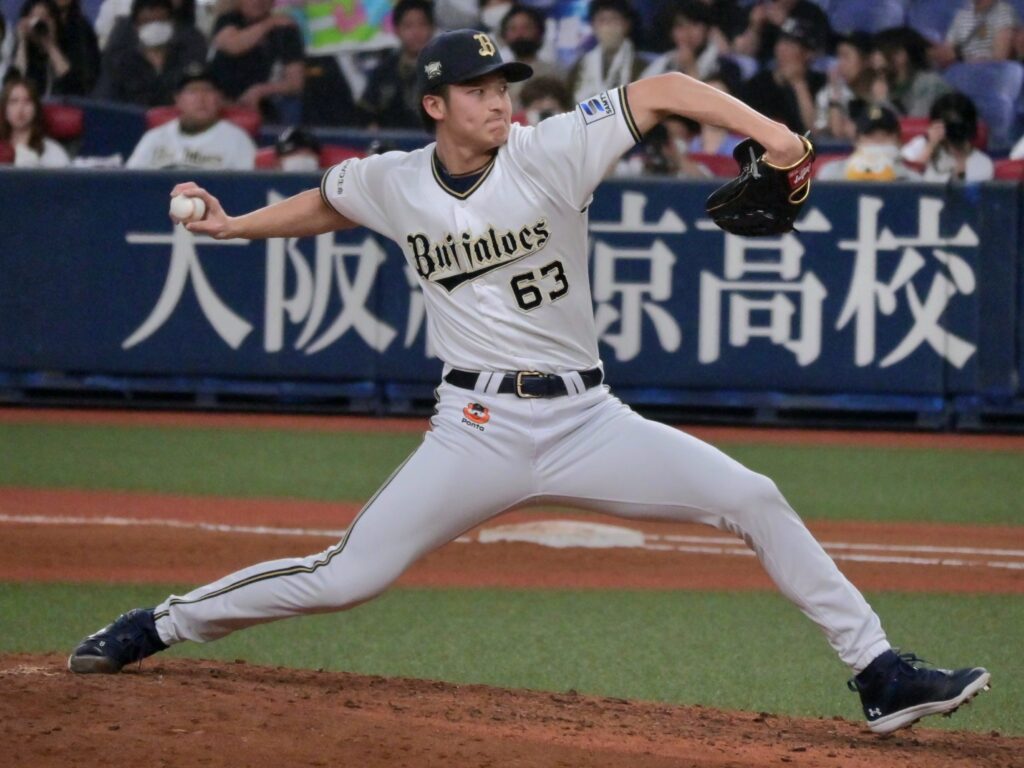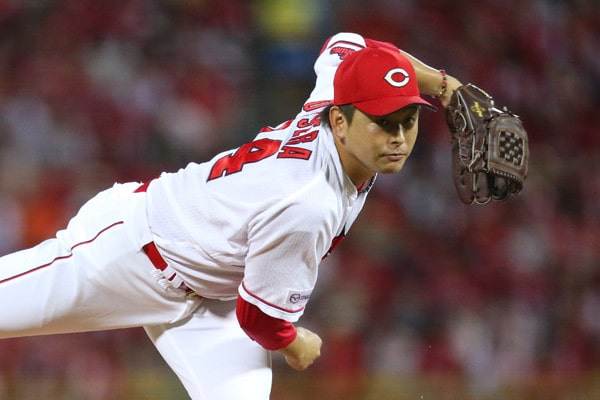
Daichi Osera, known as the ace pitcher for the Hiroshima Toyo Carp, is loved by many fans for his stable and overwhelming pitching.
We will cover a wide range of topics, including his performance, salary, and even his personal life.
Through this article, you will gain a deeper understanding of Osera’s appeal, his track record so far, and expectations for the future.
First, let’s take a look at the basic information and profile of Daichi Osera.
目次
Profile of Daichi Osera
Basic information and background
Daichi Osera was born in Nagasaki, Nagasaki Prefecture on June 17, 1991. His basic information is that he is 187cm tall and weighs 94kg, making him an ideal physique for a professional baseball player.
Osera had good athletic ability from an early age and was familiar with a variety of sports.
His passion for baseball began at an early age, when he began playing for local youth teams.
His serious attitude and hard work towards baseball were highly praised, and he quickly became a key player on the team.
He also received a lot of support from his family, and it is said that his interest in baseball was especially strengthened by his father’s influence.
What prompted him to start playing baseball and his amateur days
The reason why Osera started playing baseball was because of his father. His father loved baseball, and playing catch with him was a daily occurrence from his childhood.
During that time, he developed a love for baseball and the skills to play it. During elementary school, he joined a local youth baseball team and gradually his talent blossomed.
During his junior high school years, he started to take baseball more seriously and entered a strong local school. As he progressed through junior high and high school, his talent became more and more evident, and during his high school years, he participated in the national tournament as the ace pitcher.
His pitching style, characterized by a fast fastball and sharp curveballs, caught the eye of scouts early on.
After graduating from high school, Osera went on to Kyushu Kyoritsu University, where he showed his talent in college baseball as well.
During his college years, he began to receive high praise from professional scouts due to his success in league matches and national tournaments.
In particular, he played as an ace in the Kyushu Six University Baseball League and won many titles.
In this way, Osera Daichi has been familiar with baseball since he was a child and has been able to develop his talent.
The support of his family and the experiences he gained as an amateur are the foundation of his current playing style and success.
Next, let’s take a closer look at Osera’s career from when he turned professional to the present.
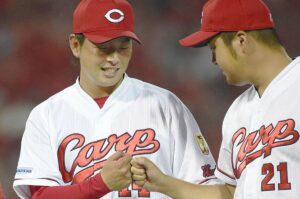
Career from turning pro to the present
Daichi Osera is the ace pitcher for the Hiroshima Toyo Carp, thanks to his outstanding pitching skills and consistent performance.
Here we take a closer look at his career from his professional debut to the present.
Draft selection and pro career
Daichi Osera was selected first overall by the Hiroshima Toyo Carp in the 2013 professional baseball draft.
He was nominated in recognition of his outstanding performance at Kyushu Kyoritsu University and was expected to contribute immediately.
His performance during his college years was outstanding, and he showed overwhelming pitching, especially in league games.
After the draft meeting, Osera immediately began negotiations with the Carp and successfully signed a contract with the team.
He was offered a signing bonus of 100 million yen and an annual salary of 15 million yen, the highest terms for a rookie at the time, which meant he was set to turn professional.
This led him to enter the world of professional baseball as a member of the Hiroshima Toyo Carp.
After turning professional, Osera attracted attention right from spring training.
His strengths, the speed of his fastball and the sharpness of his curveballs, are effective even against professional batters, and there are high expectations within the team that he will be an immediate asset.
He showed stable pitching in the Red vs. White games and exhibition games during the training camp, and his inclusion in the first-team rotation is now considered a certainty.
Professional debut and first year results
Osera made his professional debut in 2014. He started for the first time against the Yokohama DeNA Baystars on April 2nd, pitching well with only one run allowed in seven innings to earn his first professional win.
The calm pitching and competitive spirit he showed in this game made a big impression on fans and teammates alike.
After that, Osera continued to pitch steadily and maintained his place in the starting rotation throughout the season.
In his first season, he pitched in 26 games, recording 10 wins and 8 losses with an ERA of 3.28. He also recorded 141 strikeouts, proving his ability.
Thanks to these results, Osera was named the Central League Rookie of the Year and became an instant hit.
Behind his success in his first year were his earnest attitude and hard work. Even in the tough professional environment, he always approached things positively and continued to hone his skills.
In particular, his attitude of proactively taking on advice from veteran players and coaches and making it his own was highly praised.
Furthermore, Osera was able to continue pitching steadily throughout the season without any major injuries.
This also shows his excellent self-control. He paid close attention to maintaining his physical strength and conditioning, and maintained a high level of performance throughout the season.
Osera’s success in his first year as a professional is the result of his talent and hard work, and it has been a huge gain for the Hiroshima Toyo Carp.
His career is sure to attract attention as he continues to grow and excel.
Next, let’s take a closer look at the analysis of Osera’s performance.
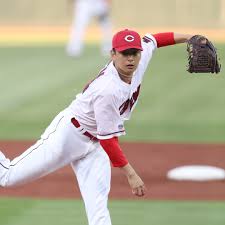
Analysis of Daichi Osera’s performance
A detailed analysis of the performance of Hiroshima Toyo Carp’s ace pitcher, Osera Daichi, reveals his characteristics and strengths as a pitcher.
Here we will take a closer look at the progress of performance by year and key pitcher stats.
Year-by-year performance trends
Daichi Osera’s performance has been consistent every year since he turned professional, and his growth is reflected in the numbers.
Below is a breakdown of his stats by year:
2014 (Rookie year):
- Number of games pitched: 26
- Wins and losses: 10 wins, 8 losses
- ERA: 3.28
- Strikeouts: 141
2015:
- Number of games pitched: 22
- Wins and losses: 7 wins, 9 losses
- ERA: 2.94
- Strikeouts: 105
2016:
- Number of games played: 7
- Wins and losses: 3 wins, 1 loss
- ERA: 5.32
- Strikeouts: 32
2017:
- Number of games pitched: 24
- Wins and losses: 10 wins, 12 losses
- ERA: 3.65
- Strikeouts: 118
2018:
- Number of games pitched: 27
- Wins and losses: 15 wins, 7 losses
- ERA: 2.62
- Strikeouts: 175
- Most wins, best ERA, Sawamura Award winner
2019:
- Number of games pitched: 26
- Wins and losses: 11 wins, 9 losses
- ERA: 3.53
- Strikeouts: 137
2020:
- Number of games pitched: 18
- Wins and losses: 5 wins, 4 losses
- ERA: 4.41
- Strikeouts: 80
2021:
- Number of games pitched: 21
- Wins and losses: 9 wins, 7 losses
- ERA: 3.07
- Strikeouts: 127
2022:
- Number of games pitched: 25
- Wins and losses: 10 wins, 5 losses
- ERA: 2.98
- Strikeouts: 139
Looking at these results, we can see that Osera has been performing consistently at a high level since his debut.
In particular, in the 2018 season, he achieved outstanding results, including the most wins, the best ERA, and winning the Sawamura Award.
This year marked a major turning point in his career.
Major pitcher performance and characteristics
Osera’s main pitching stats include his ERA, strikeouts, and WHIP (walks allowed + hits allowed / innings pitched). Let’s take a look at his pitching style and characteristics.
-
ERA : Osera’s ERA has been consistent throughout his career, ranging from the low threes to the twos, which makes his pitching very effective, especially his 2.62 ERA in 2018, which was among the best in the league.
-
Strikeouts : He also has a high strikeout ability, recording more than 100 strikeouts every year. The speed of his fastball and the sharpness of his curveballs are a threat to opposing batters. His curveball and slider in particular are his weapons, and he has fooled many batters.
-
WHIP : His WHIP is also very good, staying around 1.20 every year. This shows that he gives up few walks and hits, and has very good pitching control.
-
Pitching style : Osera’s pitching style is characterized by his control and variety of breaking balls. His fastball boasts a speed of nearly 150km/h, and his breaking balls are also diverse, including curves, sliders, and changeups. This makes it difficult for opposing batters to predict his pitches.
-
Strengths and Challenges : His strengths are his ability to use a wide strike zone and the accuracy of his curveballs. On the other hand, in order to maintain stable performance throughout a long season, stamina management and physical fitness are considered challenges. Also, maintaining performance after returning from injury is an important challenge.
An analysis of Daichi Osera’s performance shows his high level of pitching technique and stability.
We look forward to seeing him continue to grow and contribute to the team’s victories.
Next, let’s take a closer look at Osera’s annual salary and contract.
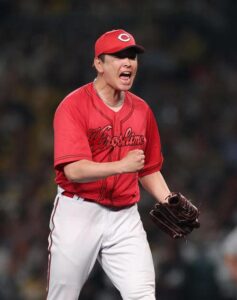
Daichi Osera’s annual salary and contract
Daichi Osera has been gaining recognition every year since turning professional thanks to his excellent pitching technique and consistent performance.
Here we will take a closer look at the annual salary trends and contract details of Osera.
Annual salary trends by year
Since turning professional, Osera Daichi’s annual salary has increased along with his performance.
The following are the main trends.
2014 (year of turning pro):
- Annual salary: 15 million yen
- Osera was an immediate asset from his first year as a professional, and achieved outstanding results, including 10 wins, earning him the Rookie of the Year award. Due to this performance, his annual salary increased significantly the following year.
2015:
- Annual salary: 45 million yen
- His performance in 2014 was recognized, and his salary was tripled. In his second season, he continued to pitch steadily and became a part of the starting rotation.
2016:
- Annual salary: 50 million yen
- Although he was plagued by injuries this year and his appearances decreased, he still maintained a high reputation. His annual salary increased slightly, showing the high expectations of the team.
2017:
- Annual salary: 50 million yen
- After returning from injury, he maintained a stable performance, winning 10 games. Although his annual salary remained the same, he established himself as the team’s main pitcher.
2018:
- Annual salary: 110 million yen
- In the 2018 season, he had an overwhelming performance, winning the most wins, the best ERA, and the Sawamura Award. As a result, his annual salary increased significantly, exceeding 100 million yen.
2019:
- Annual salary: 130 million yen
- Due to his performance the previous year, his salary was increased. This year too, he showed stable pitching and played the role of the team’s ace.
2020:
- Annual salary: 130 million yen
- Although the season was shortened due to the COVID-19 pandemic, Osera continued to play a key role as a key player for the team. His annual salary remained unchanged.
2021:
- Annual salary: 150 million yen
- He once again maintained a stable performance and gained recognition as the team’s ace. His annual salary was increased to 150 million yen, reflecting his performance.
2022:
- Annual salary: 170 million yen
- Due to his stable performance and contribution to the team, his annual salary has increased further. Osera’s stability and reliability are highly regarded.
Contract details and bonuses
Osera’s contract includes a base annual salary as well as a bonus based on performance.
These bonuses are determined by stats such as wins, earned run average, and strikeouts.
-
Winning Bonus : Osera’s contract includes a bonus based on the number of wins he gets in a season. For example, if he wins more than 10 games, he gets an additional bonus. This is a factor that motivates him.
-
ERA bonus : Some contracts provide bonuses if the ERA falls below a certain level throughout the season. In particular, since the ace is expected to be a consistent pitcher, it is important to maintain a low ERA.
-
Strikeout Bonus : Strikeouts are another statistic that is eligible for bonuses. The more strikeouts you get, the more extra rewards you get, which also impacts his pitching style.
-
Team performance bonus : Bonuses are set according to team performance as well as individual performance. For example, there is a contract that provides a special bonus if the team wins the league championship or advances to the Japan Series. This increases the awareness of contributing to the achievement of the team’s overall goals.
The terms of Daichi Osera’s contract reflect his ability and achievements, and he is appropriately evaluated according to his performance each year.
We expect him to continue to perform well in the future, and as his performance improves, the terms of his contract will likely improve as well.
Next, let’s take a closer look at Osera’s playing style.
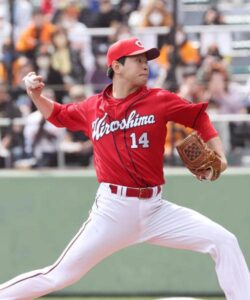
Daichi Osera’s playing style
Hiroshima Toyo Carp ace Osera Daichi’s playing style is characterized by his consistency and versatile pitching skills.
Here we will take a closer look at his pitching form and technique, as well as his strengths and challenges.
Pitching form and technique
Daichi Osera’s pitching form is characterized by its stability and efficiency.
His form is smooth, powerful and well-balanced.
This form is crucial to maintaining high performance over the long term while preventing injury.
-
Fastball : Osera’s fastball averages about 150km/h. Not only is it fast, but it also has great extension, making it a very difficult ball for batters to hit. He also has great control over his fastball, and is known for walking very few batters.
-
Breaking balls : Osera has a wide variety of breaking balls at his disposal. His curveball and slider are particularly effective, and he skillfully uses these pitches inside and outside the strike zone to toy with batters. His curveball curves sharply vertically, making it ideal for throwing off the batter’s timing. On the other hand, his slider curves sharply sideways, making it effective on the outside corner for right-handed batters and the inside corner for left-handed batters.
-
Changeup : Osera’s changeup uses the difference in speed between his fastball and his changeup to throw off the batter’s timing. This pitch is particularly effective when the batter is cornered, and is used as a finishing pitch to get a strikeout.
-
Pitching : His pitching is very skillful and flexible, changing his strategy for each batter’s turn at bat. His strengths are his aggressiveness in trying to get a strike from the first pitch and his precise control in the count to his advantage. He is also good at pitching to exploit the batter’s weaknesses.
Strengths and challenges
Osera’s playing style has many strengths, but at the same time, there are also challenges he needs to overcome.
Strengths :
-
Control : Osera’s greatest strength is his excellent control. He walks few batters and is able to consistently throw strikes, so he doesn’t lose his pitching rhythm. This allows the defense to play with confidence, improving the overall flow of the game.
-
Accuracy of breaking balls : Another of his strengths is his ability to throw a variety of breaking balls, including curveballs, sliders, and changeups, with high accuracy. This makes it difficult for batters to focus on the fastball, inducing them to miss the ball.
-
Calmness on the mound : Osera never loses his cool during a game and always displays calmness on the mound. He remains calm even under pressure and is able to continue pitching stably.
assignment :
-
Stamina management : Stamina management is important to maintain stable performance throughout a long season. In particular, fatigue tends to accumulate in the latter half of the season, so proper rest and training are necessary.
-
Injury prevention : Osera has had to miss a season due to injury in the past. His future challenges will be to prevent injuries and to thoroughly rehabilitate himself. It is especially important to take care of parts of his body that are easily overused, such as his shoulders and elbows.
-
Strengthening his signature pitch : One of his goals is to increase the variety of his signature pitches that he uses to strike out batters. He already has a wide variety of breaking balls, but to further evolve, he needs to learn new pitches and improve the accuracy of his existing pitches.
Daichi Osera has made a great contribution to the team with his excellent technique and stability.
We expect the company to continue to make further progress by leveraging these strengths and overcoming challenges in the future.
Next, let’s take a closer look at Osera’s family and private life.
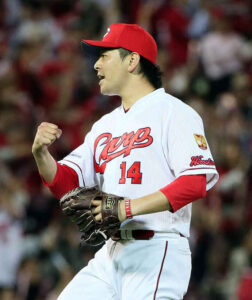
Daichi Osera’s family and private life
Behind his glittering career as a professional baseball player, the support of his family and time to relax in his private life play a major role.
Here we will take a closer look at Osera Daichi’s family structure and how they support each other, as well as his hobbies and interests.
Family structure and support
Daichi Osera’s family has been a major supporter of his career.
He values his family very much and has often said that he would not have achieved his current success without their support.
-
Parents : Osera’s parents have supported his baseball career since he was a child. His father in particular is the source of his baseball career, and playing catch with him nurtured his passion for baseball. His mother also continues to support him by providing him with meals and mental support.
-
Wife : Osera is married and has a very deep bond with his wife. His wife provides him with mental support before and after games, and the stability of his home has a positive effect on his play. His wife is also very understanding of sports, and spending time with him helps him feel refreshed.
-
Children : Osera has children and is a father at home. Time with his children is a precious time for him to refresh himself, and interacting with his family gives him energy every day.
Osera values time with his family, so he uses his home to relax and unwind from the fatigue and stress of matches, and to increase his motivation for the next game.
There is no doubt that the support of his family is a factor in his consistent performance.
Hobbies and interests
Daichi Osera has many hobbies and interests outside of baseball.
These hobbies provide him with time to relax and mentally enrich his life.
-
Golf : Osera loves golf and enjoys playing it during the off-season and on his days off. Golf is an ideal hobby for him because it allows him to relax and concentrate at the same time. He also plays rounds with teammates and other professional baseball players, which gives him the opportunity to socialize with them.
-
Watching movies : Watching movies is also one of Osera’s favorite things to do. He especially enjoys watching movies at home when he wants to relax or cool down after a match. He watches a wide variety of movies, from action movies to dramas, and this is how he relieves stress.
-
Cooking : Cooking is another of Osera’s hobbies. To enjoy meals at home, he sometimes cooks for himself and even tries new recipes, especially during the off-season. Cooking helps him relax and enjoy time with his family, which is what gives him energy.
-
Travel : During the off-season, I sometimes go on trips with my family. By visiting new places and feeling refreshed, I can recover from the fatigue of the season and approach the next season with renewed vigor. When I travel, I can deepen my bonds with my family while enjoying sightseeing and food.
Through these hobbies and interests, Osera maintains a balance between mind and body and keeps up his high level of performance.
His fulfillment in his personal life is what translates into his professional success.
Next, let’s take a closer look at Osera’s future prospects.
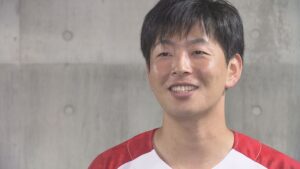
Future outlook for Osera Daichi
Daichi Osera has a brilliant track record as the ace pitcher of the Hiroshima Toyo Carp.
We will go into detail about his future goals and expectations, as well as his message and aspirations for his fans.
Future goals and expectations
Daichi Osera has accomplished many great things so far, but his baseball career is still ahead of him.
Here are some of his own goals for the future:
-
Winning the league and becoming number one in Japan : One of Osera’s biggest goals is to lead his team to a league championship and win the Japan Series. The Hiroshima Toyo Carp have won the league championship before, but they have yet to become number one in Japan. Osera has vowed to do his best to lead the team as the ace pitcher and achieve this goal.
-
Winning individual titles : He has already won many titles, including the Rookie of the Year award, Most Wins, Best ERA, and Sawamura Award, but he is aiming to win more titles. In particular, he has set long-term goals such as 200 career wins and pitching a no-hitter, and he continues to work hard to achieve these.
-
Challenge to the major leagues : Osera is said to be considering a challenge to the major leagues in the future. One of his goals is to build up a track record in Japan and become strong enough to compete in the major leagues. If his skills are recognized overseas, it will be a great contribution to the development of Japanese baseball.
-
Overcoming injuries and long-term success : Overcoming injuries and managing one’s physical condition are essential to maintaining a long career. Osera aims to manage himself and maintain high performance for a long time. This will allow him to continue contributing to the team for more seasons.
Message and aspirations for fans
Daichi Osera always remembers to be grateful to his fans and does his best to live up to their support.
Here is his message and aspirations for his fans.
-
Gratitude : Osera says that the support of his fans is his source of strength. The cheers and messages of support during games are a great encouragement and motivator. He expressed his gratitude by saying, “Thank you for your continued support. It is because of your support that I am able to play at my best.”
-
Continuing growth : Osera is always striving for personal growth. “I will continue to work hard and strive to improve even more. I will train hard every day so that I can continue to play in a way that pleases the fans,” he said, promising the fans even more success.
-
Responsibility as a team member : “My greatest mission is to contribute to the team’s victory. Team victory is my top priority, above my personal performance. I would like to continue fighting alongside everyone as a team member,” he said, demonstrating his importance of team unity.
-
Influence on the next generation : Osera also has a message for future baseball players. “I want the young players who will lead the baseball world in the future to look up to me and have dreams. I want to convey through my play that if you work hard, your dreams will come true,” he said, sending encouragement to the next generation of players.
Daichi Osera’s future outlook is filled with a wide range of goals, including his own personal growth, his team’s victory, and his impact on fans and the next generation.
We look forward to seeing his future success.
